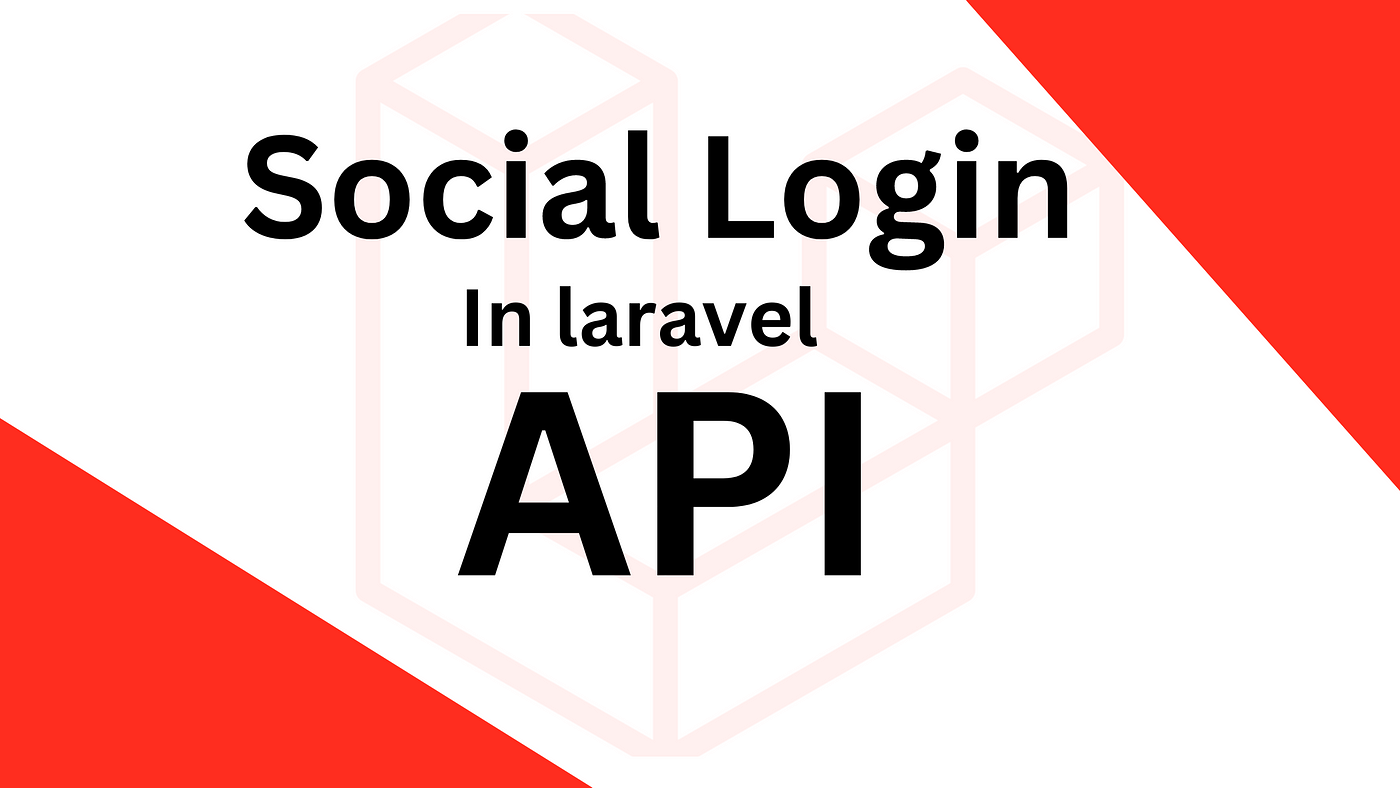Implementing OAuth and Social Logins in Laravel
In today’s digital landscape, OAuth and social logins have become essential for creating secure and user-friendly authentication systems. This article explores how to implement these features in Laravel, a popular PHP framework. From setting up OAuth providers to integrating social login buttons, we’ll cover everything you need to know to enhance your application’s authentication process.
Understanding OAuth and Social Logins
Implementing OAuth and social logins in Laravel requires a solid understanding of how these technologies integrate with the framework. Laravel simplifies this process with its Socialite package, which acts as a bridge between your application and OAuth providers like Google, Facebook, and GitHub. Socialite handles the heavy lifting of OAuth flows, such as redirecting users to the provider’s authentication page and retrieving user details after authorization.
To begin, you must configure your application to communicate with the chosen OAuth provider. This involves registering your app on the provider’s developer platform to obtain client ID and client secret credentials. These credentials are essential for secure communication between your Laravel app and the provider. Once obtained, you’ll store them in your Laravel environment file for security and easy access.
Social logins not only enhance user experience by reducing friction during registration but also improve security. By delegating authentication to trusted providers, you minimize the risks associated with storing and managing user passwords. Additionally, OAuth ensures that your app only accesses the user data explicitly granted by the provider, adhering to privacy best practices.
In the next chapter, we’ll dive into the practical steps of setting up Laravel for OAuth, including installing Socialite and configuring it to work seamlessly with your application.
Setting Up Laravel for OAuth
To implement OAuth in Laravel, the first step is to install and configure Laravel Socialite, a powerful package designed to streamline OAuth authentication. Begin by installing Socialite via Composer by running the command composer require laravel/socialite. Once installed, you’ll need to configure your application to use Socialite. Open the config/services.php file and add the necessary credentials for your desired OAuth providers, such as client_id, client_secret, and redirect URIs. These credentials are obtained from the respective social platforms, which will be covered in the next chapter.
Next, set up the authentication routes in your routes/web.php file. Create routes for redirecting users to the OAuth provider’s login page and handling the callback after authentication. In your controller, use Socialite’s driver method to specify the provider (e.g., google or facebook) and the redirect method to initiate the OAuth flow. After the user grants permission, the provider will redirect them back to your application, where you can handle the callback, retrieve user data, and create or authenticate the user in your database.
Finally, ensure your application’s security by validating the OAuth response and storing tokens securely. Socialite simplifies this process, but proper implementation is key to maintaining a secure and user-friendly authentication system.
Configuring OAuth Providers
Configuring OAuth providers in Laravel involves setting up the necessary credentials and callbacks for each social platform. Start by obtaining API keys and secrets from the respective developer portals of Facebook, Google, and Twitter. For Facebook, navigate to the Facebook for Developers portal, create an app, and retrieve the App ID and App Secret. Similarly, for Google, use the Google Cloud Console to create credentials, ensuring the Authorized Redirect URI matches your Laravel application’s callback route. Twitter requires you to create an app in the Twitter Developer Portal and obtain the API Key and API Secret Key.
Once you have the credentials, configure them in your Laravel application by updating the .env file with the respective keys. For example:
FACEBOOK_CLIENT_ID=your-facebook-app-id
FACEBOOK_CLIENT_SECRET=your-facebook-app-secret
FACEBOOK_REDIRECT_URI=http://your-app-url/callback/facebook
Next, define the callback routes in your routes/web.php file and handle the OAuth flow in your controllers. Use Laravel Socialite to manage the authentication process, ensuring the redirect URIs are correctly set in both the provider’s dashboard and your application. This step is crucial for seamless user authentication and data retrieval.
Creating Social Login Buttons
Once your OAuth providers are configured, the next step is to integrate social login buttons into your application’s user interface. These buttons serve as the primary gateway for users to authenticate using their preferred social platforms, such as Facebook, Google, or Twitter. To ensure a seamless user experience, the buttons should be visually appealing, consistent with your application’s design, and easy to locate.
Start by creating buttons for each provider in your login or registration view. Use the official branding guidelines provided by each platform to maintain consistency and familiarity. For example, Google provides specific color codes and iconography for their “Sign in with Google” button, while Facebook offers similar resources for their “Continue with Facebook” button. Adhering to these guidelines ensures users recognize the buttons instantly.
In Laravel, you can use the Socialite package to generate the necessary authentication URLs for each provider. Embed these URLs within the buttons using the href attribute. For example, a Google login button might look like this:
<a href=”{{ route(‘auth.google’) }}” class=”google-login-button”>Sign in with Google</a>.
Ensure the buttons are responsive and accessible. Use CSS to style them appropriately, ensuring they adapt to different screen sizes and devices. Additionally, consider adding tooltips or labels for clarity, especially if you’re using icons instead of text. By implementing these buttons thoughtfully, you create a user-friendly authentication flow that aligns with your application’s design and enhances usability.
Handling OAuth Callbacks
After a user logs in via a social platform, the platform redirects them back to your application with an authorization code. This callback is a critical step in the OAuth flow, as it allows your application to exchange the code for an access token and retrieve user information. In Laravel, handling OAuth callbacks is streamlined using the Socialite package, which simplifies the process of interacting with OAuth providers.
To handle the callback, you need to define a route in your routes/web.php file that points to a controller method. This method will process the callback, exchange the authorization code for an access token, and fetch user details. For example, if you’re using Google as the provider, the callback URL might look like /auth/google/callback. Inside the controller method, use Socialite’s user() method to retrieve the user object, which contains details like name, email, and profile picture.
It’s crucial to validate the state parameter during the callback to prevent CSRF attacks. Socialite automatically handles this if you use its built-in state management. Once the user data is retrieved, you can proceed to store it in your database, as discussed in the next chapter. Properly handling OAuth callbacks ensures a secure and seamless authentication experience for your users.
Storing User Information
Once you’ve retrieved user information from the social platform, the next step is to store it securely in your application’s database. This involves creating or updating a user model, managing OAuth tokens, and ensuring a seamless registration and login process. In Laravel, the User model is typically the central entity for handling authentication. You can extend this model to include additional fields such as provider_id and provider_name to store the unique identifier and the name of the social platform (e.g., Google, Facebook). This allows you to associate social accounts with your application’s users.
When storing OAuth tokens, it’s essential to encrypt sensitive data like access_token and refresh_token. Laravel’s built-in encryption mechanisms can be used to secure this information. Store these tokens in a dedicated table, such as oauth_tokens, linked to the user model. This ensures that tokens can be refreshed or revoked without affecting the core user data.
For user registration, check if the user already exists using the provider_id. If not, create a new user record with the retrieved information. For login, authenticate the user using the stored tokens and update them if necessary. This approach ensures a smooth and secure user experience while maintaining data integrity.
Managing User Sessions
Proper session management is essential for maintaining both security and a seamless user experience in Laravel applications. After storing user information and handling OAuth tokens, the next step is to ensure that user sessions are managed effectively. Laravel provides a robust session management system out of the box, which can be customized to meet your application’s needs.
To log users in, Laravel’s Auth facade simplifies the process. Use the attempt method to authenticate users with their credentials, and Laravel will automatically handle session creation. For social logins, once the user is authenticated via OAuth, you can manually log them in using the login method, passing the user model instance. This ensures the session is tied to the authenticated user.
Logging users out is equally straightforward. The logout method invalidates the session, removing the user’s authentication state. To handle session timeouts, Laravel allows you to configure session lifetime in the config/session.php file. Setting a reasonable timeout ensures inactive sessions are terminated, enhancing security.
Session security is critical. Laravel encrypts session data by default, but you should also regenerate the session ID after login to prevent session fixation attacks. Additionally, use HTTPS to protect session cookies from being intercepted. By combining these practices, you can ensure secure and efficient session management in your Laravel application.
Securing Your OAuth Implementation
Securing your OAuth implementation is critical to protect user data and maintain trust in your application. Start by validating OAuth tokens rigorously. Always verify the token’s signature, issuer, and audience to ensure it originates from a trusted provider. Use Laravel’s built-in tools, such as Laravel Passport or Socialite, which handle token validation seamlessly. Additionally, implement token expiration checks to prevent the use of stale or compromised tokens.
To prevent CSRF attacks, ensure that state parameters are used during the OAuth flow. This parameter acts as a unique identifier for each request, mitigating the risk of unauthorized access. Laravel’s CSRF protection middleware can be extended to safeguard OAuth endpoints.
Data privacy is another cornerstone of secure OAuth implementations. Encrypt sensitive data, such as tokens and user information, both in transit and at rest. Use HTTPS for all communication and leverage Laravel’s encryption features to secure stored data. Regularly audit your OAuth implementation for vulnerabilities, such as token leakage or improper redirect URIs, to maintain a robust security posture. By adhering to these practices, you can ensure a secure and reliable authentication system.
Testing Your OAuth Implementation
Testing your OAuth implementation is a critical step to ensure that your Laravel application handles authentication securely and reliably. Start by writing unit tests for your OAuth routes and controllers. Use Laravel’s built-in testing tools, such as PHPUnit, to simulate OAuth flows. For instance, mock the OAuth provider’s responses to test how your application handles successful logins, token refreshes, and error scenarios like invalid tokens or denied permissions. Ensure your tests cover edge cases, such as expired tokens or revoked access by the user.
Next, write feature tests to validate the end-to-end flow of social logins. Use Laravel’s Socialite package to simulate user interactions with providers like Google, Facebook, or GitHub. Test scenarios where users grant or deny access, and verify that your application correctly redirects, stores tokens, and handles session management. Additionally, test the integration of OAuth with your existing authentication system, ensuring that users can seamlessly switch between social logins and traditional email/password authentication.
Finally, test for security vulnerabilities. Use tools like Laravel Dusk to automate browser testing and ensure that your OAuth implementation is resistant to common attacks, such as CSRF or token leakage. By thoroughly testing your OAuth setup, you can confidently deploy a secure and user-friendly authentication system.
Deploying and Monitoring
Deploying your Laravel application with OAuth and social logins requires careful planning to ensure a seamless transition from development to production. Start by configuring your environment variables in the .env file, ensuring that all OAuth client IDs, secrets, and callback URLs are correctly set for the production environment. Use Laravel’s built-in encryption for sensitive data to enhance security. Next, optimize your application for production by running php artisan config:cache and php artisan route:cache to improve performance.
Once deployed, monitoring OAuth usage is critical to identify potential issues and ensure smooth operation. Integrate tools like Laravel Telescope or third-party services such as Sentry to track authentication requests, errors, and performance metrics. Set up logging to capture OAuth-related events, such as token generation and validation failures, to diagnose issues quickly. Additionally, monitor API rate limits imposed by OAuth providers to avoid service disruptions.
Post-deployment, be prepared to handle issues like expired tokens, callback URL mismatches, or provider-side changes. Implement automated alerts for critical failures and maintain a rollback plan in case of major issues. Regularly review logs and metrics to ensure your OAuth implementation remains secure and efficient. By combining robust deployment practices with proactive monitoring, you can deliver a reliable and user-friendly authentication experience.

Conclusions
Implementing OAuth and social logins in Laravel can significantly improve your application’s security and user experience. By following the steps outlined in this guide, you can create a robust authentication system that leverages the power of OAuth and social platforms. Remember to always test your implementation thoroughly to ensure a seamless user experience.



